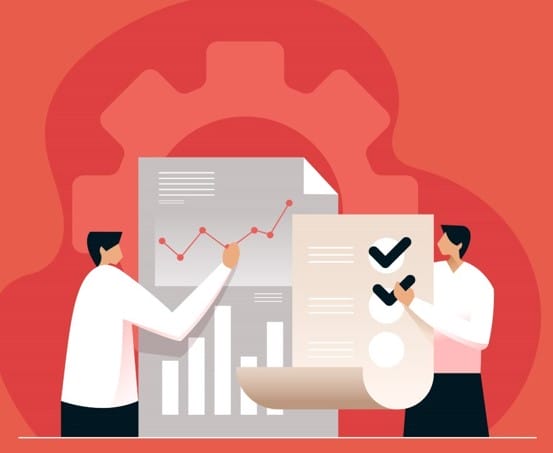Building a legacy through a forex trading career is an ambitious endeavor that requires dedication, skill development, and a long-term perspective. While forex trading is often associated with short-term gains and high volatility, it can also be a vehicle for accumulating long-term wealth. This comprehensive guide will explore the strategies and principles behind nurturing a forex trading career that can lead to lasting financial success and the creation of a legacy.
The Forex Trader’s Mindset

1. Discipline and Emotional Control
A successful forex trader’s mindset is characterized by discipline and emotional control. These qualities are essential for maintaining consistency in trading and making rational decisions even in high-pressure situations.
Discipline:
- Adherence to a Trading Plan: Discipline involves following a well-defined trading plan consistently. This plan includes strategies, risk management rules, and predefined entry and exit criteria. Deviating from the plan can lead to losses.
- Avoiding Impulsive Actions: Impulsive actions, such as chasing after quick profits or revenge trading (attempting to recover losses quickly), can be detrimental. Discipline helps traders stay focused on their plan, avoiding impulsive decisions.
- Consistent Routine: Successful traders often maintain a consistent daily routine, which includes regular analysis, trading hours, and breaks. Consistency helps reduce emotional stress and maintain focus.
Emotional Control:
- Managing Fear and Greed: Fear and greed are two common emotions that can influence trading decisions. Fear can lead to premature exits from profitable trades, while greed can result in holding losing positions for too long. Emotional control is about recognizing and managing these emotions.
- Avoiding Overtrading: Emotional traders may feel the urge to trade excessively, often leading to poor decisions and higher transaction costs. Emotionally controlled traders stick to their predefined trading strategies and limit their trading frequency.
- Staying Calm During Drawdowns: Drawdowns (periods of losses) are a natural part of trading. Maintaining emotional control during these times is crucial. Panic-selling during drawdowns can lead to significant losses, while a disciplined trader will stick to their risk management plan.
2. Risk Management

Effective risk management is the cornerstone of a forex trader’s long-term success. It involves strategies and techniques to protect capital and minimize potential losses.
Key Aspects of Risk Management:
- Setting Risk Tolerance: Traders must define their risk tolerance level, which is the maximum amount of capital they are willing to risk on a single trade. This helps prevent catastrophic losses.
- Position Sizing: Position sizing refers to determining the appropriate amount of capital to allocate to a trade. It is often calculated based on the trader’s risk tolerance and the distance from the entry to the stop-loss level.
- Stop Loss Orders: A stop-loss order is a predefined price level at which a trade is automatically closed to limit potential losses. Traders should always use stop-loss orders to protect their capital.
- Diversification: Diversifying a trading portfolio involves trading multiple currency pairs or assets. This spreads risk and reduces the impact of losses in any single trade. However, over-diversification should be avoided as it can dilute potential profits.
3. Continuous Learning
Forex markets are dynamic and ever-changing. Continuous learning is essential for staying relevant and adapting to evolving market conditions.

Elements of Continuous Learning:
- Market Analysis: Traders should stay updated with market news, economic events, and geopolitical developments that can influence currency movements. This includes analyzing fundamental factors such as interest rates, economic data releases, and central bank policies.
- Technical Analysis: Continuously improving technical analysis skills involves studying price charts, patterns, and technical indicators. Traders should be able to identify key support and resistance levels, trend formations, and potential entry and exit points.
- Backtesting and Strategy Development: Ongoing improvement of trading strategies through backtesting and optimization is crucial. Traders should analyze past trades, identify areas for improvement, and adapt their strategies accordingly.
- Psychological Training: Learning to manage emotions effectively is an ongoing process. Traders may seek psychological training or therapy to develop the mental resilience needed to withstand the psychological pressures of trading.
- Networking and Mentorship: Building a network of fellow traders and seeking mentorship from experienced traders can provide valuable insights and accelerate the learning process.
Long-Term vs. Short-Term Trading

1. Benefits and Drawbacks of Short-Term Trading
Short-term trading, often referred to as day trading or scalping, involves making numerous trades within a single trading day or holding positions for a very short duration, typically minutes to hours. Here are the key benefits and drawbacks of short-term trading:
Benefits:
- Quick Profits: Short-term traders aim to profit from small price movements that occur frequently throughout the trading day. This can lead to rapid accumulation of profits if executed successfully.
- Reduced Overnight Risk: Short-term traders typically close their positions at the end of the trading day, reducing the risk associated with overnight news events or market gaps that can affect longer-term positions.
- High Activity: Short-term trading can be exciting and mentally stimulating, as traders are actively engaged in the markets, making decisions and executing trades throughout the day.
Drawbacks:
- High Transaction Costs: Short-term trading involves frequent buying and selling, which can result in significant transaction costs, including spreads and commissions. These costs can eat into profits.
- Stress and Emotional Pressure: The fast-paced nature of short-term trading can be emotionally taxing. Traders may experience high levels of stress and pressure, leading to emotional decision-making.

- Limited Time for Analysis: Short-term traders have limited time for in-depth analysis and research. This can lead to making quick decisions without thorough consideration of market conditions.
2. Finding the Right Balance
Choosing between short-term and long-term trading is a personal decision that depends on individual preferences, risk tolerance, and trading goals. Some traders prefer to find a balance between the two approaches by incorporating elements of both short-term and long-term strategies. Here are some considerations for finding the right balance:
- Risk Tolerance: Assess your risk tolerance and comfort with market volatility. Short-term trading can be riskier due to frequent price fluctuations.
- Time Commitment: Consider how much time you can dedicate to trading. Short-term trading demands more time for monitoring and executing trades, while long-term trading is less time-intensive.
- Trading Style: Your trading style should align with your personality. Some traders thrive in the fast-paced environment of short-term trading, while others prefer the patience and analysis required for long-term trading.
- Strategy Diversification: Combining both short-term and long-term strategies in your trading portfolio can provide diversification and help spread risk.
Building a Solid Trading Plan

1. Setting Clear Goals
A solid trading plan begins with setting clear and achievable goals. These goals provide a sense of direction and purpose, helping traders stay focused and motivated. When setting trading goals, consider the following:
- Financial Objectives: Determine how much capital you aim to make or grow through forex trading. This could be a specific monetary target or a percentage return on investment (ROI).
- Timeframe: Specify the timeframe over which you plan to achieve your trading goals. Are you looking for short-term gains, or do you have a longer-term perspective?
- Risk Tolerance: Assess your risk tolerance and determine the level of risk you are comfortable with. Your goals should be in alignment with your risk tolerance to avoid taking excessive risks.
- Consistency: Establish the consistency you aim to achieve in your trading. Consistency might involve a daily, weekly, or monthly profit target or maintaining a certain win rate.
Setting clear and realistic goals is crucial because it provides a benchmark against which you can measure your progress and make necessary adjustments to your trading plan.
2. Developing a Trading Strategy
A trading strategy defines how you will approach the forex market. It outlines the rules, criteria, and methodologies you will use to enter and exit trades. A well-defined trading strategy is essential for consistency and minimizing emotional decision-making. Key aspects of developing a trading strategy include:
- Analysis Methods: Specify whether you will use technical analysis, fundamental analysis, or a combination of both to make trading decisions. Determine which technical indicators, chart patterns, or fundamental factors you will rely on.
- Entry and Exit Criteria: Clearly define the conditions that must be met for you to enter a trade (entry signals) and the conditions that will trigger your exit (exit signals or stop-loss levels).
- Timeframes: Decide on the timeframe(s) you will use for your analysis and trading. Common timeframes include daily, 4-hour, and 1-hour charts. Your choice should align with your trading style.

- Risk-Reward Ratio: Establish your minimum acceptable risk-reward ratio for each trade. This ratio ensures that the potential reward justifies the risk you are taking.
- Trade Management: Outline how you will manage open positions, including trailing stop-losses, scaling in or out of trades, and position sizing.
A well-thought-out trading strategy forms the foundation of your trading plan and guides your decision-making process.
3. Money Management and Position Sizing
Money management is a critical component of your trading plan, and it’s about preserving capital and managing risk effectively. Key aspects of money management include:
- Position Sizing: Determine the size of each position based on your risk tolerance and the distance between your entry and stop-loss levels. Position sizing ensures that no single trade can significantly deplete your trading capital.
- Stop Loss Orders: Specify where and how you will place stop-loss orders for each trade. This is a crucial risk management tool that limits potential losses.
- Risk Per Trade: Decide on the percentage of your capital that you are willing to risk on a single trade. This is often referred to as the risk per trade and is typically kept low to protect capital.
- Risk-Reward Ratio: Reiterate the minimum acceptable risk-reward ratio you established in your trading strategy. This ratio should align with your overall risk management goals.
- Portfolio Diversification: Consider diversifying your portfolio by trading multiple currency pairs. Diversification can reduce risk by spreading exposure across different assets.
4. Backtesting and Optimization

Before implementing your trading plan with real capital, it’s essential to backtest it using historical data. Backtesting involves applying your trading strategy to past price data to evaluate its performance. Here’s how to approach backtesting:
- Data Selection: Choose a dataset that reflects the time period and market conditions you intend to trade in. Ensure that your historical data is accurate and reliable.
- Trade Simulation: Simulate your trades according to the rules of your trading strategy, recording entry and exit points, as well as stop-loss levels.
- Performance Analysis: Analyze the results of your backtesting. Look at key performance metrics, including profit and loss, win rate, drawdowns, and risk-adjusted return. This analysis helps you understand how your strategy would have performed historically
Conclusion
By understanding the nuances of the forex market, cultivating the right mindset, and embracing a balanced trading strategy, individuals can embark on a path to financial success. Building a solid trading plan, incorporating effective risk management, and continuously refining one’s skills are pivotal in achieving lasting wealth. While challenges and risks are ever-present, those who persist and adapt can leave a financial legacy that endures, providing security and opportunities for generations to come.
